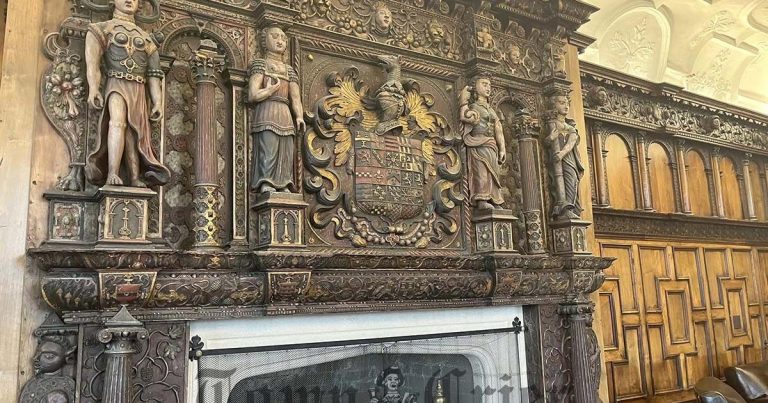With the weather warming up, it's time to get back on the road and discover more of New England's hidden gems. There are many wonderful free museums on the campuses of some of the region's most historic colleges in Western Massachusetts. Just a 90-minute drive from the Merrimack Valley, it's an easy day trip that lends itself to many experiences.
The Mead Museum of Art at Amherst College in Amherst is home to more than 5,000 years of art from around the world. Native American, European, and contemporary art mingle together, and art galleries encourage visitors to engage deeply with social and political issues.
Current exhibitions include Alicia Grullon's “Like a Slow Walk with Trees,” which focuses on labor activism, and “Trópico es Político: Caribbean Art under the Visitor Economy,” which challenges notions of “paradise” for different groups of people.
Of particular note is the Rotherwas Room, a paneled room dating from the 17th century. The panels were originally installed on the estate of an English knight, then arrived in Amherst in the 1940s; Robert Frost gave regular public readings of his works at the Chamber.
The room's historic carvings, stained glass windows and magnificent oak chimney evoke centuries-old nobility and a strong history of craftsmanship preserved for future generations.
Head west to Northampton, home of Smith College, one of the last women's colleges in the country. The Smith College Museum of Art is an impressive four-story building, divided by era and continent of origin. The museum's open galleries make it easy to walk around and discover works of art from around the world.
Masters such as Monet, Rivera, Van Gogh, Warhol, Rodin, Seurat, Spencer and Morisot are well represented alongside contemporary artists exploring modern social and political movements.
The exhibitions ask visitors to consider complex issues facing the art world today, such as ownership and acquisition of art. Be sure to visit the two full bathrooms downstairs, where artists have decorated every inch of the space, right down to the toilets.
Just a short walk across campus, Smith College's Botanical Garden is a great way to connect with nature at the end of your day. In good weather, it's fun to explore the acres of outdoor gardens, but don't let a little rain deter you: The Lyman Conservatory is an expansive conservatory containing a collection of plants from around the world.
Succulents, ferns and palms all have their own homes, as do warm and cool temperate plants. Banana trees and cocoa plants grow high in the air. The camellia trail displays beautiful tropical flowers along with citrus plants.
Where else can you find oranges growing in New England in the dead of winter?
The ongoing exhibition examines the interconnectedness of plants and people through botanical practices and the life of Sylvia Plath, one of Smith's famous alumnae. While a student, Plath studied botany at Lehman Conservatory, and worked with the bell that would become a central metaphor in her eponymous novel.
The exhibition explains that bell jars were the first step in the development of modern greenhouses, making it possible to grow plants like never before. Visitors can experience botanical drawing exercises that Plath completed in the 1950s and discover paintings from Plath's poetry while exploring exotic plants.
Of course, no trip to Western Mass is complete without enjoying some of the region's best food. Try Cushman's Market in Amherst for breakfast and coffee, Florence Bay Bar in Northampton for some midday dessert (and more coffee), and Daily Operation in Easthampton for delicious dinner in a converted mill building with plenty of vegetarian and vegan options.
Northampton is also a hotspot for vintage clothing stores, and thrifty people are taking notice.
Don't miss the opportunity to explore a different part of the state and enjoy some culture (and good food) along the way.

